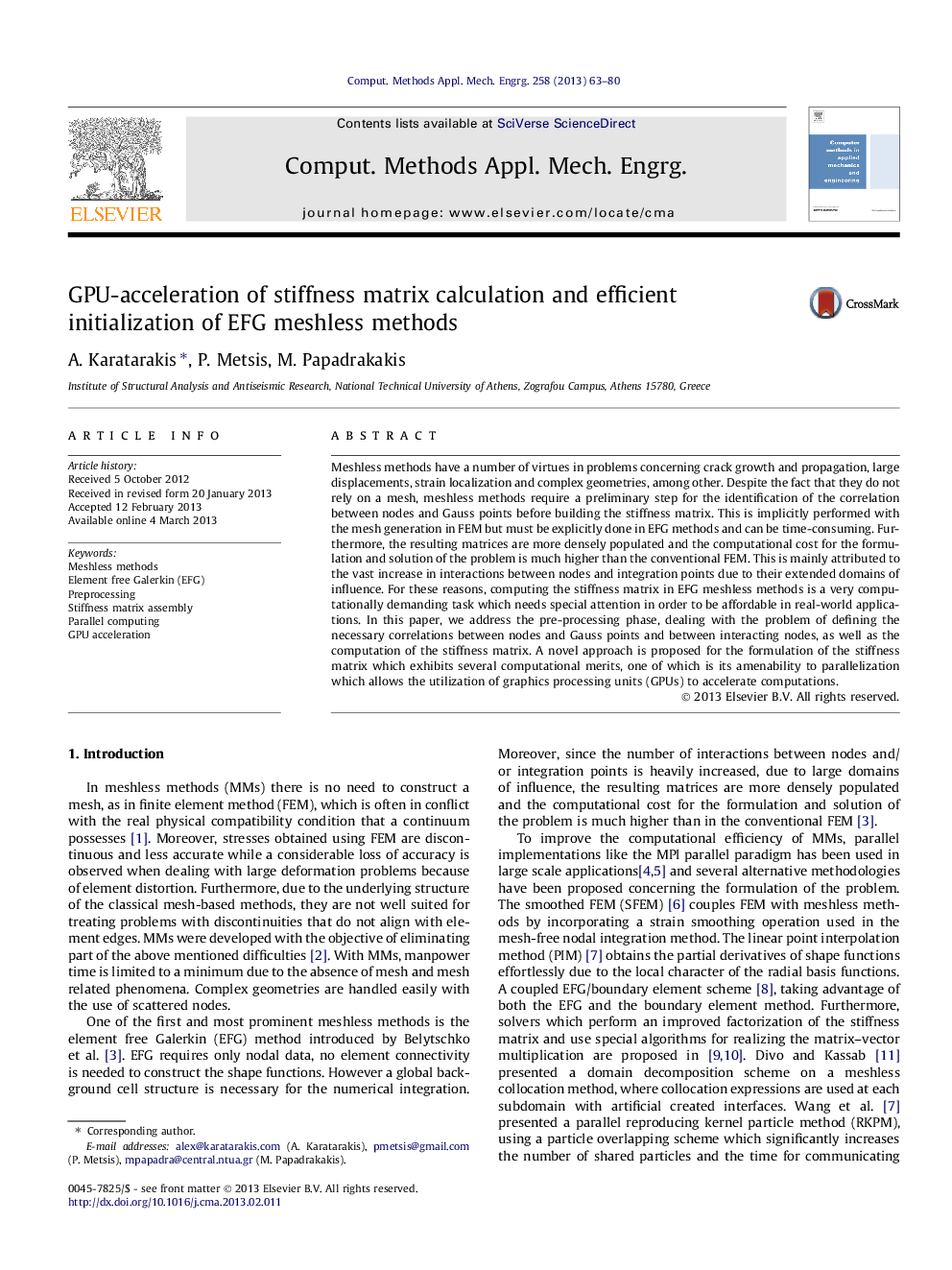| Article ID | Journal | Published Year | Pages | File Type |
|---|---|---|---|---|
| 498194 | Computer Methods in Applied Mechanics and Engineering | 2013 | 18 Pages |
Meshless methods have a number of virtues in problems concerning crack growth and propagation, large displacements, strain localization and complex geometries, among other. Despite the fact that they do not rely on a mesh, meshless methods require a preliminary step for the identification of the correlation between nodes and Gauss points before building the stiffness matrix. This is implicitly performed with the mesh generation in FEM but must be explicitly done in EFG methods and can be time-consuming. Furthermore, the resulting matrices are more densely populated and the computational cost for the formulation and solution of the problem is much higher than the conventional FEM. This is mainly attributed to the vast increase in interactions between nodes and integration points due to their extended domains of influence. For these reasons, computing the stiffness matrix in EFG meshless methods is a very computationally demanding task which needs special attention in order to be affordable in real-world applications. In this paper, we address the pre-processing phase, dealing with the problem of defining the necessary correlations between nodes and Gauss points and between interacting nodes, as well as the computation of the stiffness matrix. A novel approach is proposed for the formulation of the stiffness matrix which exhibits several computational merits, one of which is its amenability to parallelization which allows the utilization of graphics processing units (GPUs) to accelerate computations.
► The pre-processing phase of EFG meshless methods is addressed by utilizing regions. ► A novel approach, amenable to parallelization, is proposed for assembling the stiffness matrix. ► Processing power of GPUs and multi-core CPUs is used to accelerate computations.
